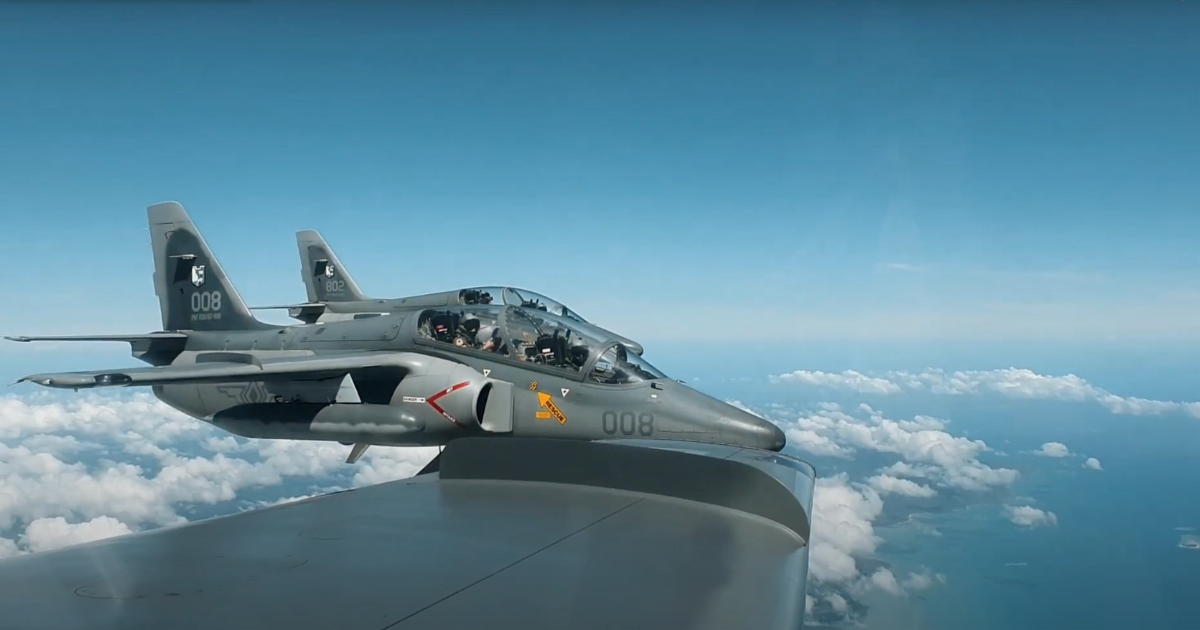PH needs to build a credible air power

By Manuel Mogato | Date 07-15-2024
MANILA — The latest incident in Bajo de Masinloc, which involved, for the first time, the People’s Liberation Army-Air Force (PLAAF), has brought to light the urgent and immediate need to upgrade the Philippine Air Force.
It has to develop a minimum credible air power to deter Chinese aggression in the country’s airspace in the disputed waters in the West Philippine Sea.
China has demonstrated immense air power by sending two multi-role fighters to an area far from China’s mainland and closer to the Philippines Air Defense Identification Zone (PADIZ).
The military has failed to identify the Chinese fighters that dropped flares on the path of the Air Force NC-212i on a routine maritime security patrol near Bajo de Masinloc.
But it could be a Chinese J-10C fighter operating from base on Mischief Reef, which is close to Bajo de Masinloc and could have a longer loiter time to patrol in the West Philippine Sea.
The Chengdu J-10C is a single-engine, lightweight fighter designed for air combat and strike missions. It can be comparable to the American F-16V.
China also has a twin-engine, heavyweight multi-role fighter, the J-20, comparable to the US F-15EX.
The incident at Bajo de Masinloc showed China’s air superiority and ability to enforce an air identification zone in the South China Sea.
It has three air bases in the Spratly – Fiery Cross Reef, Subi Reef, and Mischief Reef. In less than an hour, Chinese fighters based in Mischief Reef can reach any part of the western parts of the country, including the capital, Manila.
Thus, there is an urgent need to upgrade and build a credible air force to deter any form of Chinese aggression in the air.
In Taiwan, China has demonstrated in the last several years its ability to send waves of combat aircraft — fighters, bombers, and surveillance planes — testing the self-ruled island’s capability to respond to provocations.
In the Philippines, this was the first time China has demonstrated its air power, although it did not enter the country’s air space.
The Bajo de Masinloc incident is a wake-up call for the defense and military establishments to rush the acquisition of a multirole fighter to improve its air defense capability.
It already has powerful radars that could detect incoming aircraft as far as 400 miles away.
However, it lacked the equipment to intercept any hostile aircraft when they crossed into its airspace.
The Philippines has been dilly-dallying on acquiring a multi-role aircraft in its modernization program.
The Philippine Air Force has already chosen the Swedish Saab JAS-39 to replace its antiquated F-5A/Bs Freedom Fighters, first acquired from the United States under Foreign Military Financing in 1965.
In the 1990s, Taiwan gifted one F-5A to the Philippines, hoping it would be allowed to use an uninhabited island in the north as an impact area for naval gunnery.
In 2016, Mavulis island, less than 100 kilometers from the nearest Taiwanese territory, was transformed into a Marine base to monitor constantly the Chinese warships crossing from the South China Sea to the Pacific.
The remaining 10 aircraft were retired in 2005 after four decades of service after they were too old and expensive to maintain.
The Philippines does not have spare parts for the planes because the US no longer manufactures F-5 fighters.
For a decade, the Philippines had no air defense capability. It had limited radar coverage and no capability to intercept intruding aircraft.
It was only during the administration of President Benigno Aquino III that the Philippines replaced the F-5A/Bs with the light trainer jets from South Korea, FA50 Golden Eagle.
For 18.9 billion pesos, 12 KAI T-50 were acquired and were delivered during President Rodrigo Duterte’s administration.
However, these aircraft are designed for training and transition into the much faster fighters, like the F16s or JAS39s.
In 2021, Washington offered Manila, its former colony and ally, 12 F-16s for $2.4 billion, including munitions, spares, training, and five-year maintenance.
The Philippines could not afford it. It has only allocated $1.2 billion under its modernization program.
The country’s embassy in Washington is negotiating to acquire a squadron of used F-16s for a lesser and more affordable price under the Foreign Military Financing (FMF) program.
Nothing has come out from the direct commercial sale and the FMF program.
The Philippines still needs to sign a deal with SAAB for the 12 JAS39 fighters.
In December 2023, President Ferdinand Marcos Jr approved an ambitious 10-year 1.9 trillion pesos military upgrade program to acquire four squadrons of multi-role fighters.
About 400 billion pesos were allocated for 48 multi-role fighters and an additional 40 billion pesos for FA-50s to train Air Force pilots.
However, the ambitious acquisition program for the Air Force remained on the drawing boards because the government lacked funds.
It has only requested Congress to fund the military’s 2025 modernization program with 50 billion pesos, about 50 billion pesos short of the dream to realize Marcos’ pipe dream of a 1.9 trillion pesos capability upgrade program.
The military must stop delaying its multi-role fighter acquisition to regain its pride and deter China’s aggression.
Decide on the fighter acquisition deal now and start building an integrated air defense capability.
Tags: Security
